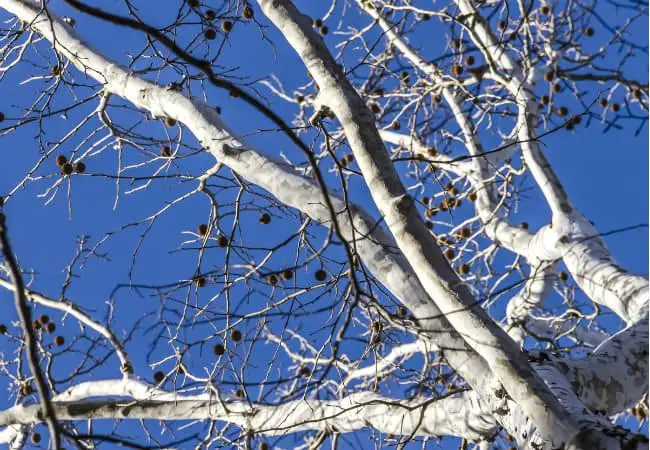Introduction to Trees with White Bark
Trees with white bark stand out strikingly in any landscape, offering a unique aesthetic appeal and a sense of tranquility. These trees are not just visually captivating but also serve various ecological and cultural purposes. In this comprehensive article, we will explore some of the most popular species of white-barked trees, their characteristics, benefits, and how to care for them in your garden or landscape.
Popular Trees with White Bark
1. Birch Trees (Betula)
Birch trees are perhaps the most famous white-barke trees. Their delicate, papery bark peels off in thin, horizontal layers, revealing the pristine white surface beneath.
- Species: Notable species include the Paper Birch (Betula papyrifera) and White Birch (Betula pendula).
- Habitat: Birch trees are commonly found in northern temperate regions.
- Characteristics: These trees are known for their fast growth, graceful form, and stunning white bark that contrasts beautifully against a green backdrop.
2. Aspen Trees (Populus)
Aspen trees are another popular group of white-barked trees. They are renowned for their trembling leaves and smooth, white bark.
- Species: The Quaking Aspen (Populus tremuloides) and European Aspen (Populus tremula) are prominent examples.
- Habitat: Aspens thrive in cool climates, often forming large colonies through their root systems.
- Characteristics: The white bark of aspen trees is smooth and often marked with black knots and scars, adding to their distinctive appearance.
3. Sycamore Trees (Platanus)
Sycamore trees, especially the American sycamore, are known for their mottled white and gray bark.
- Species: The American Sycamore (Platanus occidentalis) is the most notable.
- Habitat: These trees prefer moist, well-draine soils and are often found along riverbanks.
- Characteristics: The bark of sycamore trees exfoliates in irregular patches, creating a striking pattern of white, green, and brown.
4. Eucalyptus Trees (Eucalyptus)
Certain species of eucalyptus also have striking white bark.
- Species: The Snow Gum (Eucalyptus pauciflora) is particularly known for its smooth, white bark.
- Habitat: These trees are native to Australia and thrive in a variety of climates, from coastal areas to mountainous regions.
- Characteristics: Eucalyptus trees often have smooth bark that peels off in ribbons, revealing a fresh, white layer beneath.
Ecological and Aesthetic Benefits of White-Barked Trees
Ecological Benefits
White-barked trees play a crucial role in their ecosystems. They provide habitats for various wildlife species, contribute to the carbon cycle, and help in soil stabilization.
- Wildlife Habitat: Birds, insects, and mammals often rely on these trees for shelter and food.
- Carbon Sequestration: Like all trees, white-barked varieties absorb carbon dioxide, helping to mitigate climate change.
- Soil Stabilization: The root systems of these trees help prevent soil erosion, especially in riparian zones.
Aesthetic Benefits
The aesthetic appeal of white-barked trees cannot be overstate. They add year-round interest to gardens and landscapes.
- Visual Contrast: The white bark provides a stunning contrast against the green foliage and darker tree trunks.
- Seasonal Beauty: These trees are particularly striking in winter when their white bark stands out against the snow and barren landscapes.
- Landscape Design: White-barked trees are often used in landscape design to create focal points and enhance visual interest.
Caring for White-Barked Trees
Planting
Choosing the right location and planting method is essential for the healthy growth of white-barked trees.
- Location: Most white-barked trees prefer full sun to partial shade. Ensure the soil is well-draine.
- Planting Time: Early spring or fall is the best time to plant these trees to give their roots time to establish.
- Spacing: Proper spacing is crucial to avoid competition for resources. Refer to specific species guidelines for spacing requirements.
Watering and Mulching
Proper watering and mulching are vital to ensure the trees’ health, especially during the initial years.
- Watering: Regular watering is essential during the first few years. Once established, many of these trees are drought-tolerant.
- Mulching: Mulch helps retain soil moisture, suppress weeds, and regulate soil temperature. Apply a 2-3 inch layer of organic mulch around the base, avoiding direct contact with the trunk.
Pruning
Pruning helps maintain the tree’s shape and health.
- Timing: Late winter or early spring is the best time to prune most white-barked trees.
- Method: Remove dead or diseased branches and thin out crowded areas to improve air circulation.
Pest and Disease Management
White-barked trees can be susceptible to certain pests and diseases. Regular monitoring and prompt action are necessary to keep them healthy.
- Common Pests: Birch borer, aphids, and caterpillars can affect these trees. Use appropriate insecticides or organic methods to control infestations.
- Diseases: Fungal infections and cankers are common issues. Pruning affected areas and using fungicides can help manage these problems.
Conclusion
White-barked trees are a magnificent addition to any landscape, offering both ecological benefits and aesthetic beauty. From the iconic birch and aspen to the majestic sycamore and eucalyptus, these trees are not only visually striking but also vital components of their ecosystems. By understanding their characteristics, benefits, and care requirements, we can ensure these natural wonders thrive in our gardens and landscapes.


